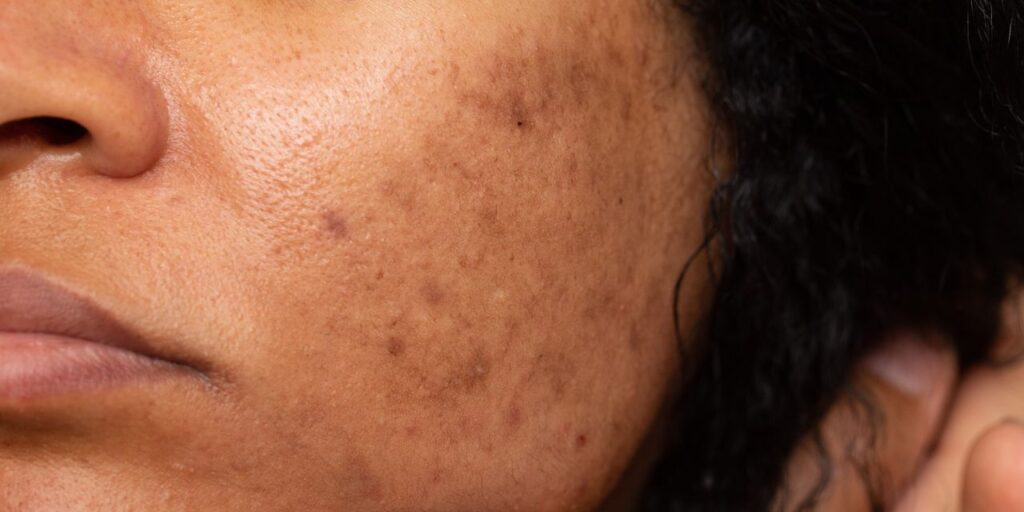Even with your best efforts (and a lineup of pricey brightening products), dark spots notoriously take their sweet time to go away. More specifically, “it can take around a month,” Mamina Turegano, MD, board-certified dermatologist at Sanova Dermatology in New Orleans, tells SELF—sometimes, “up to three months.” But in our rush to fade stubborn hyperpigmentation ASAP, dermatologists say we often make mistakes that make those very marks even more noticeable.
To understand what makes dark spots so persistent, it helps to know what’s going on under the surface. On a basic level, those brown, red, or purplish marks show up when your body produces excess melanin (or pigment), which can happen in response to things like unprotected sun exposure, for instance, hormonal changes (such as during pregnancy), and underlying inflammation (from an angry breakout, a popped pimple you messed with—but shouldn’t have—or a bug bite).
While some serums and creams can definitely speed up the fading process, plenty of everyday skin care habits—ones you might not even think twice about—can make these marks stick around even longer. Here are the biggest mistakes dermatologists see all the time when it comes to dark spots—plus, what to do instead.
1. You layer multiple “brightening” ingredients at once.
No single product will magically even your skin tone overnight, but there are lots of derm-approved ingredients that can brighten it over time. Think vitamin C, an antioxidant that slows melanin production. Or retinol and exfoliants, both of which slough off the pigmented skin cells to reveal a fresh, glowier layer underneath.
That said, more isn’t always better—and piling on multiple heavy hitters won’t speed things up. In fact, vitamin C, chemical exfoliants (like glycolic, lactic, or salicylic acid), and retinol shouldn’t be used together all at once, since this combination can irritate and inflame the skin (including your existing hyperpigmentation).
What to do instead: Rather than using all your strongest actives in the same day, at the same time, Dr. Turegano recommends picking one brightener (for at least two weeks) and seeing how your skin responds. You can also consider using vitamin C in the morning, say, and retinol at night, or alternating them on different days (versus piling them on in a single day). Not only is this approach gentler on the skin, but it also makes it easier to tell what’s actually making a difference.
2. You haven’t treated your underlying acne first.
In an effort to get rid of leftover marks, it’s tempting to prioritize brightening. But none of that will make a lasting difference if you’re not addressing the root cause of the discoloration—which, for many folks, is still-active acne.
“A mistake I see often is people are having breakouts, but they’re more focused on treating the hyperpigmentation,” Dr. Turegano says. Because when you’re still breaking out, your skin stays inflamed from that buildup of excess oil, dead skin cells, and bacteria—which is exactly what causes melanin overproduction (and dark spots) in the first place. So even as you try to fade these stubborn marks, new ones may just pop up right behind them.


